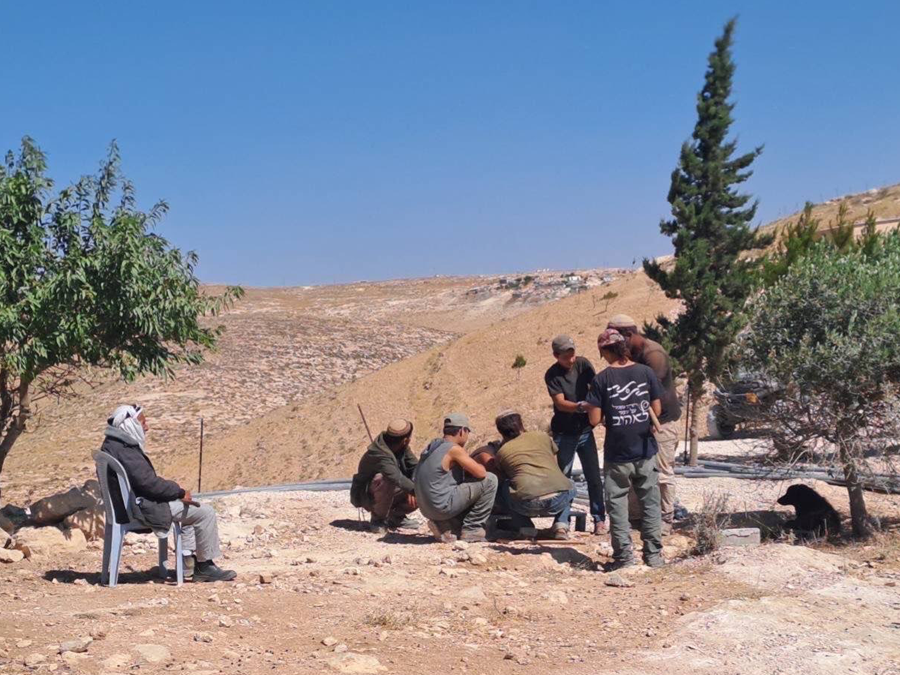Save a life, save the world
let's rescue humanity together,
support our missions in the Mediterranean
The Mediterranea with Palestine project has long been present in the Palestinian villages of the Masafer Yatta region in the southern West Bank, and in January 2025 began a monitoring mission to document human rights violations and crimes committed by the Israeli Occupation forces. Through systematically collecting data and testimonies, the project aims to document the oppression experienced by the Palestinian civilian population, which Mediterranea’s activists observe daily on site.
This document, which serves as a preview of a more comprehensive annual report, presents the findings from the first 129 days of monitoring, from 23 January to 31 May 2025. The information gathered is based on the continuous presence and non-violent protective action of our activists in support of the Palestinian population.
The 838 violations documented across 27 Palestinian villages in just over four months (see Table 1), distributed throughout Area C, clearly demonstrate that what is happening in the Occupied Territories is the result of a deliberate and centralised strategy of ethnic cleansing targeting the resident Palestinian population. This strategy is based on coordinated and complementary action between Israeli security forces – army and police – and settlers. Nothing that happens is random or isolated.
As regards the geographical distribution of the recorded violations (see Figure 1), the highest concentration of incidents occurred in the areas of Susiya (150), Tuwani (93), Umm Dhorit (87) and Khallet Athaba (83): these four villages alone account for 49% of all recorded incidents. These villages occupy strategic positions in the context of Israeli settlement expansion: they are either surrounded by or in close proximity to Israeli settlements, located on the edge of or within Firing Zone 918 (a military training area), or situated along key routes linking Palestinian population centres.
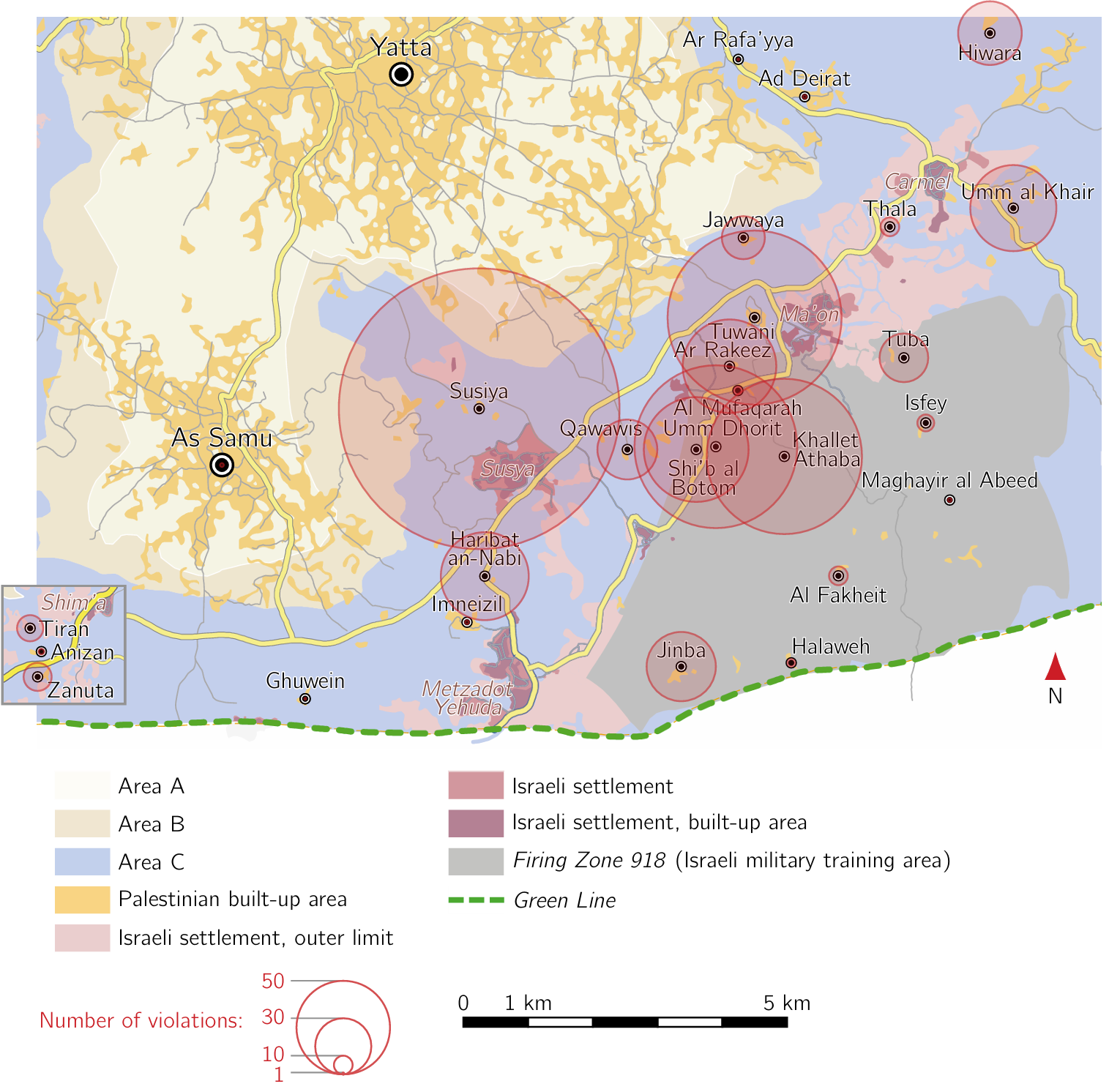
While the ethnic cleansing underway is driven by a colonial project of exclusive land appropriation, its first stage is the invasion of private Palestinian property. It is no coincidence, then, that the most frequently recorded violation was the invasion of Palestinian property for purposes of intimidation or harassment by settlers.
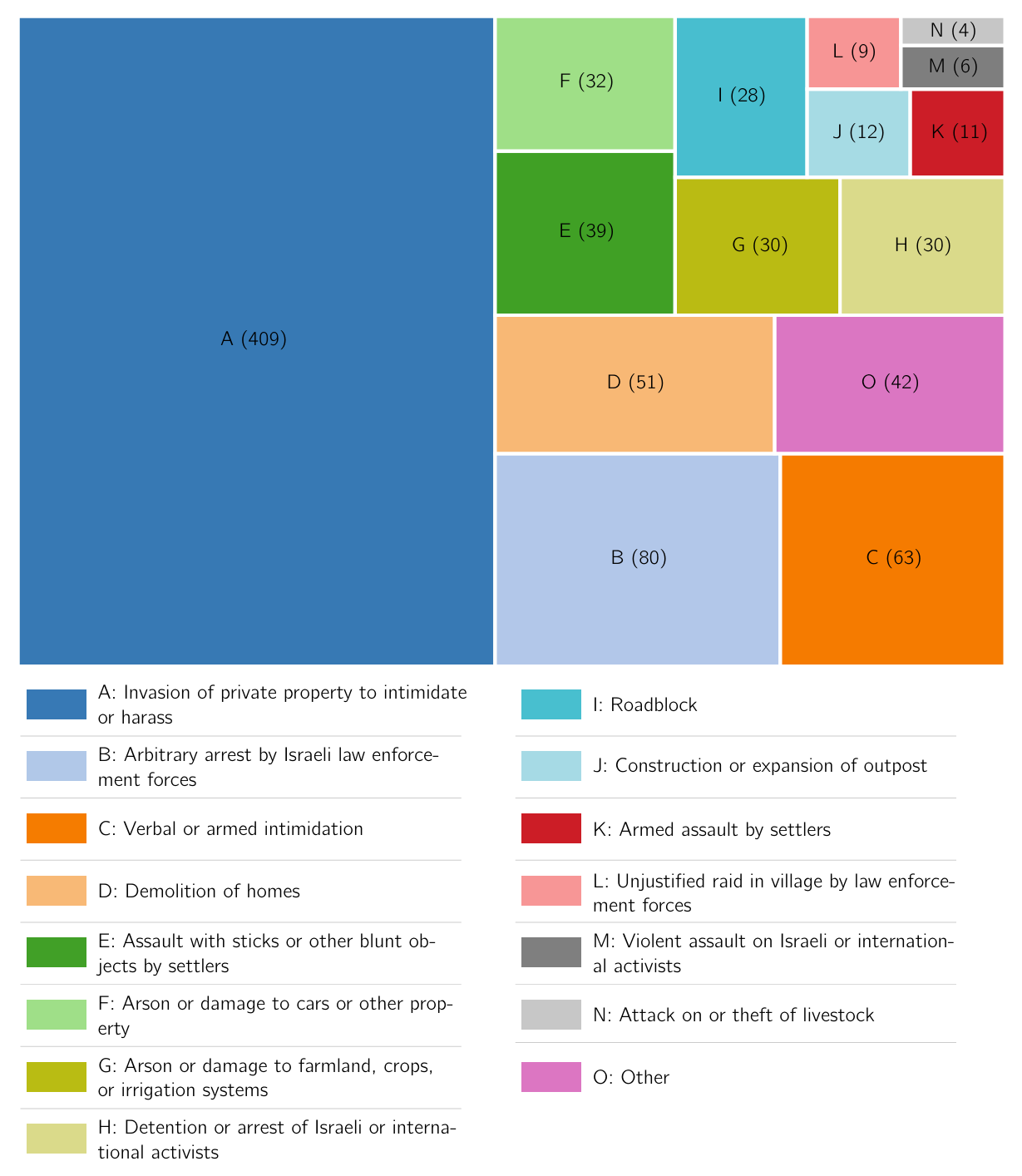
Often, property invasion is also a sign that something more serious is about to occur. In 147 of the 409 documented cases – more than one in three – the invasion was accompanied by other types of violations, such as verbal or armed intimidation by the Occupation forces, settler assaults, arrests of Palestinians on the property, or the setting fire to or damaging land, plants, irrigation systems or other types of property (see Figure 2).
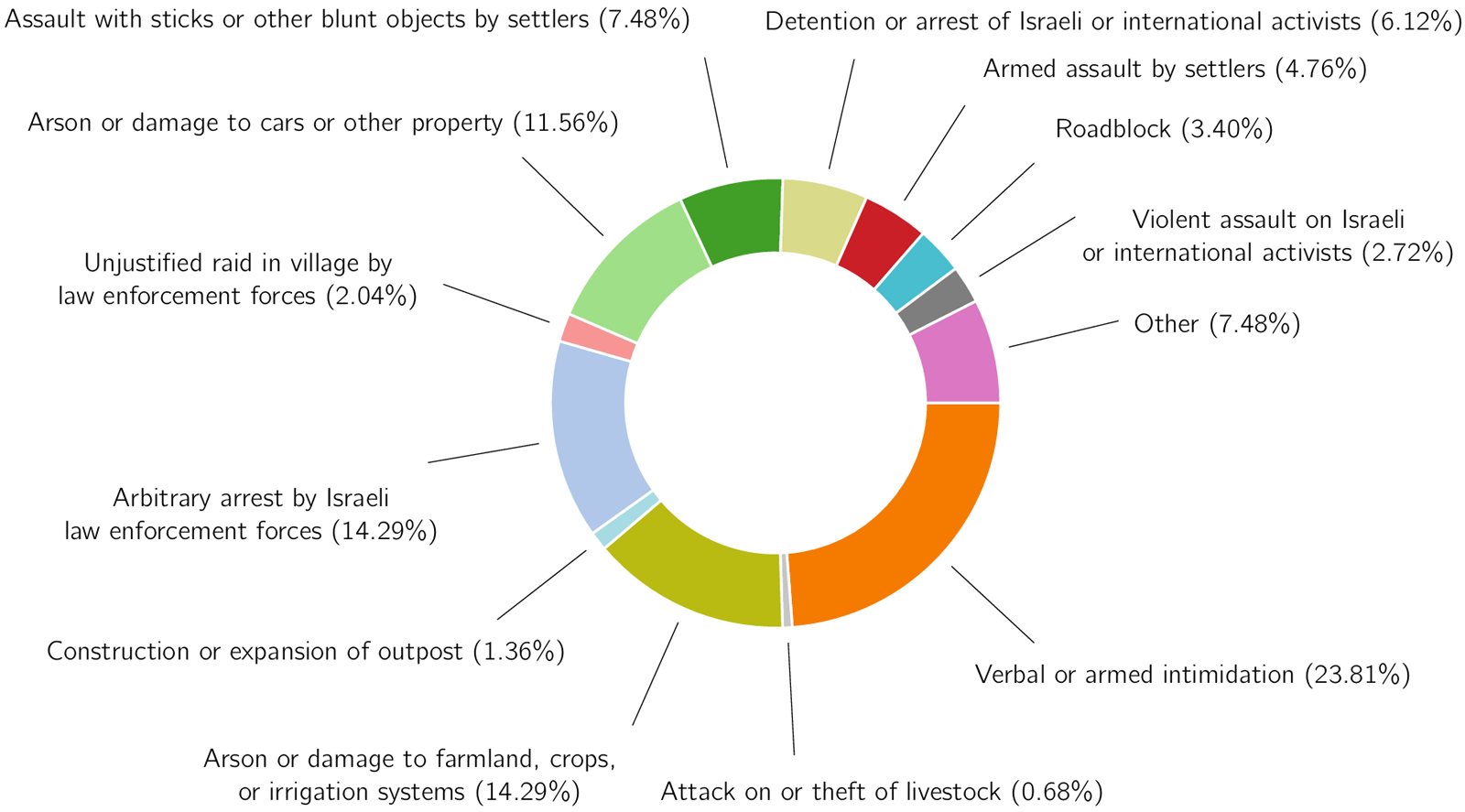
In 136 episodes of settler violence, the Israeli police were also present at the scene. As the occupying force, the police are required under international law to protect the rights of the occupied population. However, throughout the monitoring period, they never formally sanctioned the perpetrators. On the contrary, in most cases, the police – whose mere presence contributes to the ongoing oppression and denial of the Palestinian people’s right to self-determination – were themselves directly or indirectly responsible for further acts of violence against the Palestinian population (see Figure 3).
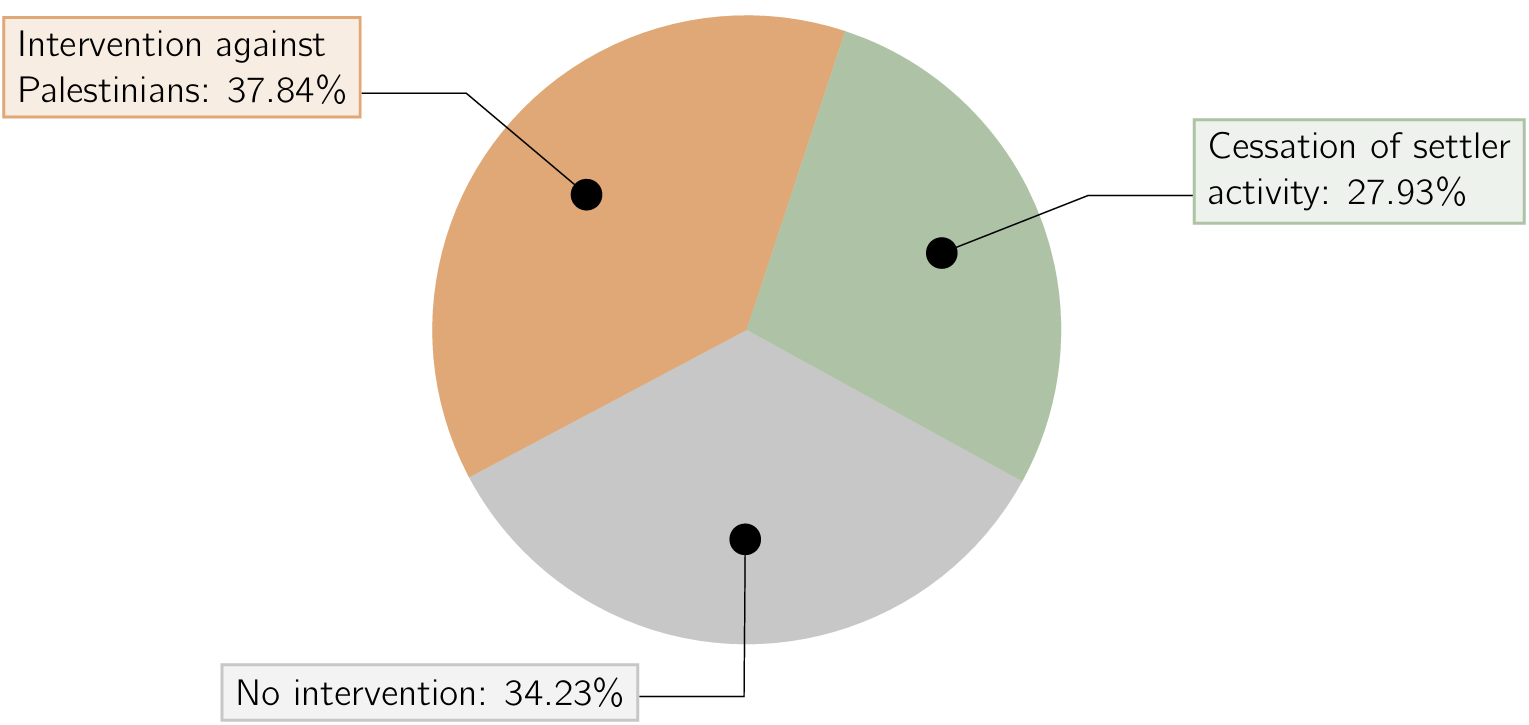
Other types of violations examined in the report, which we consider significant even if less frequent, include the establishment of new settler outposts and the imposition of roadblocks. These respectively represent a denial of Palestinians’ freedom of movement and the final stage of land appropriation. Both are key elements in shaping the apartheid system in the Occupied Territories, designed to continue the process of ethnic cleansing against the Palestinians.
Further evidence that the actions of settlers and Israeli security forces are coordinated and aimed at the ethnic cleansing of Masafer Yatta can be seen in four representative case studies included in the report. These were chosen as examples of the daily human rights violations experienced by the Palestinian population, due to their specific characteristics: the high level of violence involved, the targeting of a particular village, family, or activist, and the strategic location of the affected villages.
In the village of Tuba, settler violence was accompanied by the targeting of international activists, to remove inconvenient witnesses to the crimes of the Occupation. In Jinba, we observed blatant operational coordination between settlers and the army to terrorise the resident population. Khallet Athaba is the most striking example of the ethnic cleansing taking place in Masafer Yatta, first through the demolition of Palestinian homes and then through the settlers’ occupation of the village. Finally, the case of Ar Rakeez shows an escalation of coordinated violence between Israeli security forces and settlers, which resulted in the serious injury of Palestinian Shaikh Saeed al-Amor.
At this particularly complex historical moment, the Palestinian community is fully aware of the challenges it will face in the near and medium term. It also recognises that remaining on its land will only be possible through daily resistance. It is only by keeping this resilience in mind – this hard-won refusal to yield to the Occupation – that the data presented in this report can be fully understood.
A powerful example of resistance is Ali, aged 86, who has always lived in the village of Khallet Athaba and now finds himself living with settlers camped on his land. Ali has chosen to sit in front of the site where his house once stood, now demolished. In simple, direct words, he expressed the meaning of resistance: “I was born here before Israel existed. My family has owned this land for generations. So how can they try to throw me out, telling me it’s no longer mine?”
